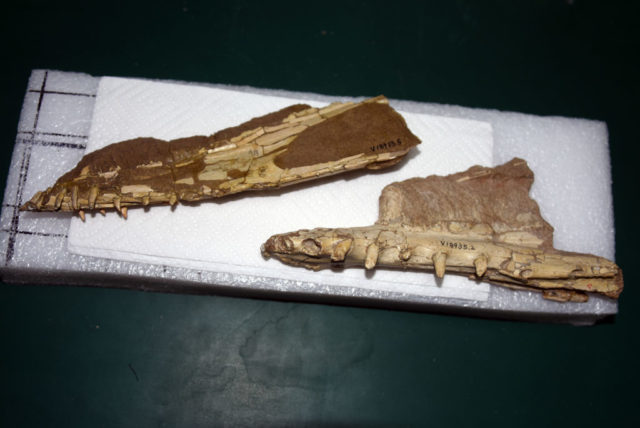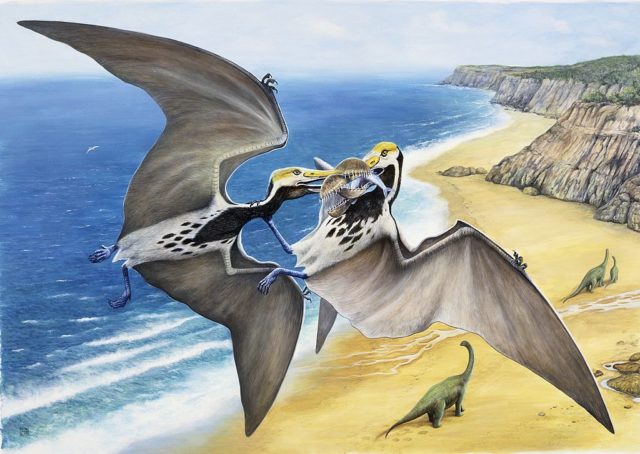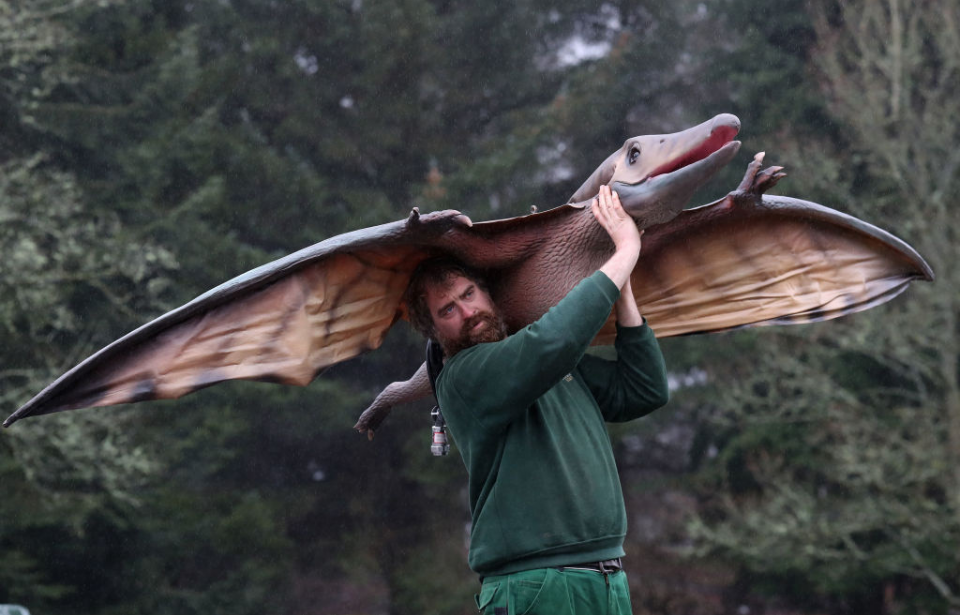Archaeologists working on the Isle of Skye, off the west coast of Scotland, have discovered the fossilized skeleton of a pterosaur, a winged reptile that lived during the time of the dinosaurs.

The three-dimensional fossil was discovered within limestone along the island’s shore, and has a wingspan of over 2.5 meters, making it the largest Jurassic period pterosaur ever discovered. Some 170 million years old, the fossil shows an aerodynamic head and criss-crossed teeth that would have acted as a cage while the creature was hunting.
It has been named Dearc sgiathanach, meaning “winged reptile.”

The fossil was discovered by University of Edinburgh doctoral student Amelia Penny during a field trip to the Isle of Skye in 2017. She and her group were looking for dinosaur footprints when she noticed the pterosaur’s jaw jutting out of limestone, in an area known as Brothers’ Point.
Diamond-tipped saws were used to extract the fossil from the limestone. According to New Scientist, X-ray computed microtomography and close visual inspection then revealed a well-preserved skeleton, complete with bones.
It’s believed the pterosaur was a juvenile at the time of its death, due to its head and back bones being fused and its rapid-growth bone microstructures. If given the opportunity to grow into adulthood, it would have developed a wingspan of three meters.
Welcome Dearc sgiathanach, our new species of pterosaur from the Middle Jurassic of the Isle of Skye, Scotland!
When it was flapping around the heads of dinosaurs 170 million years ago, it was the largest animal that had ever flow in Earth history (that we know of). pic.twitter.com/yR9tOojSGE— Steve Brusatte (@SteveBrusatte) February 22, 2022
Pterosaurs – more widely known as pterodactyls – were the first vertebrate animals to evolve flight and were particularly large, with some fossils and skeletons putting them around the size of an airplane. It is believed they continued to evolve throughout the Triassic period, and by the Cretaceous period were the size of fighter jets, with a wingspan of 12 meters.
The latest indicates that previously-held beliefs about the species need to be re-examined, as it shows pterosaurs evolved into their much larger sizes earlier than previously thought. The reason for this gap of knowledge is the result of a lack of fossils from the Middle Jurassic period, as climate conditions have not been conducive to their surviving the test of time.

Speaking with CNN, Natalia Jagielska, a doctoral student at the University of Edinburgh and the lead author of the paper about the find, said it is particularly rare. “Pterosaurs preserved in such quality are exceedingly rare and are usually reserved to select rock formations in Brazil and China,” she said. “And yet, an enormous superbly preserved pterosaur emerged from a tidal platform in Scotland.”
“This is a superlative Scottish fossil,” added Steve Brusatte, professor and Personal Chair of Palaeontology and Evolution in the School of GeoSciences at the University of Edinburgh. “The preservation is amazing, far beyond any pterosaur ever found in Scotland and probably the best British skeleton found since the days of Mary Anning in the early 1800s.
“Dearc is the biggest pterosaur we know from the Jurassic period, and that tells us that pterosaurs got larger much earlier than we thought, long before the Cretaceous period when they were competing with birds, and that’s hugely significant.”
In 1823, Anning discovered a three-meter-long Plesiosaurus in Dorset, southern England. It was the first of the species to be found intact. A number of discoveries have been found in and around Isle of Skye in recent years, including footprints belonging to Stegosauruses. It’s believed the area was once a subtropical lagoon home to a community of dinosaurs.
Thank you all, so much, for all the wonderful messages & lovely press coverage of the new amazing Scottish pterosaur! pic.twitter.com/6oek8V8JWZ
— Natalia Jagielska (@WryCritic) February 22, 2022
More from us: New Meat-Eating Dinosaur Is Oldest Discovered On UK Soil
“To achieve flight, pterosaurs had hollow bones with thin walls, making their remains incredibly fragile and unfit to (preserve) for millions of years,” said Jagielska. “And yet our skeleton, 160 million years on since its death, remains in almost pristine condition, articulated and almost complete… As if he were alive mere weeks ago.”
At present, the plan is to continue studying the fossil to develop a better understanding of the pterosaur.
